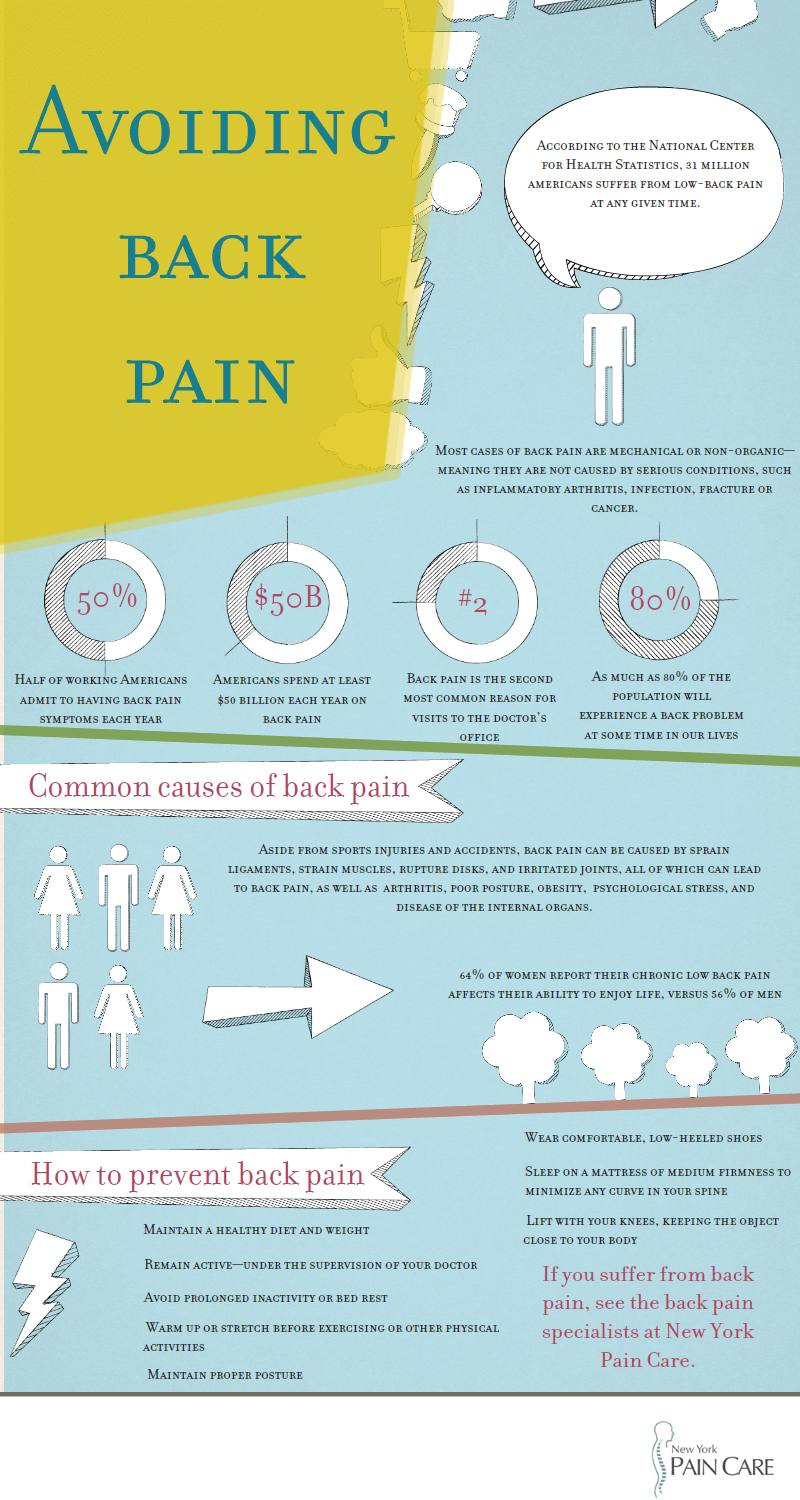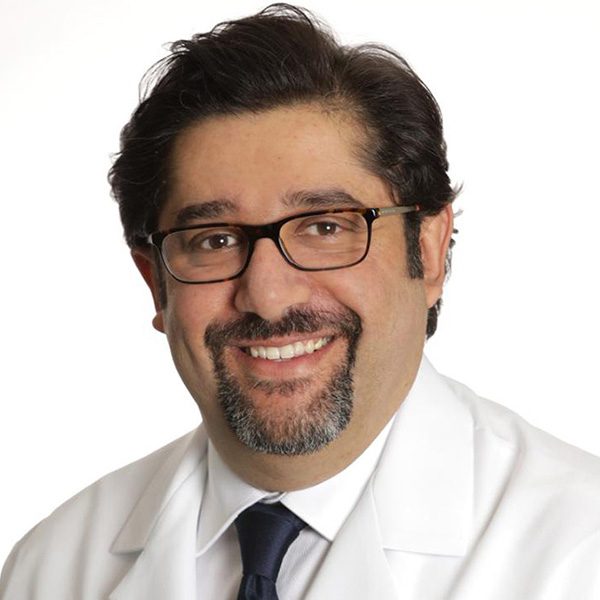 OUR LOCATIONSCall to book (212) 604-1300
OUR LOCATIONSCall to book (212) 604-1300
 OUR LOCATIONSCall to book (212) 604-1300
OUR LOCATIONSCall to book (212) 604-1300
Table of contents

Most lower back pain is due to a mechanical malfunction, such as a problem with the way the parts of your spine, nerves and back muscles work together. There are two types of lower back pain: acute, which lasts less than two weeks, and chronic, which lasts longer and requires stronger pain management treatments.
Many possible reasons exist for lower back pain, including:
No matter what the cause of your lower back pain, get it treated properly to address the underlying issue. The back pain specialists at New York Pain Care not only get you back to your normal routines, but they also prevent a recurrence of the pain.
Finding the cause of your pain is the first step to getting effective treatment. A physical exam and a review of your medical history may point to the cause.
Sometimes, determining a definitive lower back pain diagnosis requires more testing, such as:
You may need several tests before your NYC back pain doctor arrives at a firm diagnosis. Once your physician knows the cause of your lower back pain, the next step is creating and following an appropriate treatment plan.
Low back pain affects up to 80% of adults at some point in their lives. Effective treatment options range from conservative methods like physical therapy, medications, and lifestyle modifications to interventional techniques such as injections or minimally invasive procedures. Early diagnosis and tailored care are key to managing pain and preventing chronic issues.
New York Pain Care has some of the country’s top back pain specialists to treat your lower back pain. Whether you suffered an accident or have a chronic medical condition, these lower back pain doctors near me in NYC deliver a thorough diagnosis and the best treatment to get you out of pain. At New York Pain Care, you have access to immediate appointments, including during early morning and evening hours, in eight convenient locations in NYC and NJ. This has been a top-rated practice for 10 years in a row by Castle Connolly.




Lower back pain treatment depends on its cause. Acute pain from an accident usually goes away with rest or massage. Pain relievers stop some or all of the pain, giving you time to heal without too much discomfort.
If rest doesn’t help your lower back pain, the next step may involve more involved treatments, such as:
If your lower back pain is severe, your doctor may recommend interventional treatment. Spinal injections and surgeries are examples of interventional treatments that treat back pain.
Most cases of low back pain improve within a few weeks with proper care. Staying active, practicing good posture, and using heat or ice therapy can provide quick relief. For persistent pain, consulting a specialist ensures access to advanced treatments like spinal injections or nerve blocks.
Dr. Hosny is a total lifesaver! I struggled with chronic lower back pain for years until meeting with him. His expert care and innovative treatments like laser therapy brought real relief. Thanks to Dr. Hosny, I'm pain free and my quality of life is restored!
Jack S. ★★★★★I'm so dang happy I found Dr. Hosny at Spine Specialist Doctors NJ. For years I struggled bad with lower back pain that made it tough to even walk sometimes. One visit with Dr. Hosny tho and he knew exactly how to fix me up. His expert spine adjustments felt like magic! Now thanks to him I'm feelin' tip top and pain free! Me and Dr. Hosny got along real good too he's a top notch doc that really cares bout his patients. I'll be tellin' all my friends and fam to see him for any back or neck issues. Hands down best spine doc in NJ!
Megan H. ★★★★★I have been a Patient at NY Pain Care for quite a while... reason being I have chronic lower back pain and 2 anterior/posterior lumbar surgeries that were not very successful. I am very happy because after trying so many other treatments including chiropractic care, injections, different types of therapies etc. , they figured out the correct medications that alleviates some of the pain and also keeps me functional . I see Josephine Musto NP and she has always been attentive to my needs, & a great listener. I would strongly recommend NY Pain Care to anyone that struggles with pain on a daily basis.
Lisy R. ★★★★★Since the beginning of 2007, I have been on disability, mostly due to pain from a chronic bone disease. In that same year, I became a patient of the New York Pain Center, where I was treated for lower back pain, until it became necessary to have surgery. Even after the surgery, I continued to be treated at the center, and must say that I am very satisfied with the services received. The staff is great and the providers are genuinely concern with controlling my chronic pain so that I may live a better quality of life. I would highly recommend this center to anyone in need of pain management, or any other service available.
Hecor T. ★★★★★I experienced instant relief when I started to see Carol. I suffered from chronic lower back pain for about 3 yrs and recently diagnosed with tear in my disc. After having an acute episode, I sought out PT.
Orlena Y.

If your lower back pain lasts for more than two weeks and stops you from participating in your daily activities, visit New York Pain Care for a highly trained back pain specialist.
Visit your doctor sooner if your lower back pain turns severe or if:
The top-rated back pain doctors and interventional spine specialists offer the latest medical breakthroughs and the most effective treatments. These New York and New Jersey doctors have received multiple awards, including being voted US Top Doctors and Most Dedicated Physicians.
In addition to lower back pain treatment, the award-winning back pain doctors also offer diagnoses and effective treatment plans for:
With eight convenient locations in New York City and New Jersey, there’s an office near you. Often, same-day appointments are available, so there’s no reason to wait. Get the help you need to eliminate your pain. Make an appointment today to return to a pain-free life and the activities and sports you enjoy.
New York Pain Care
20 Squadron Blvd, Suite 290
New City, NY 10956
(212) 242-8160






